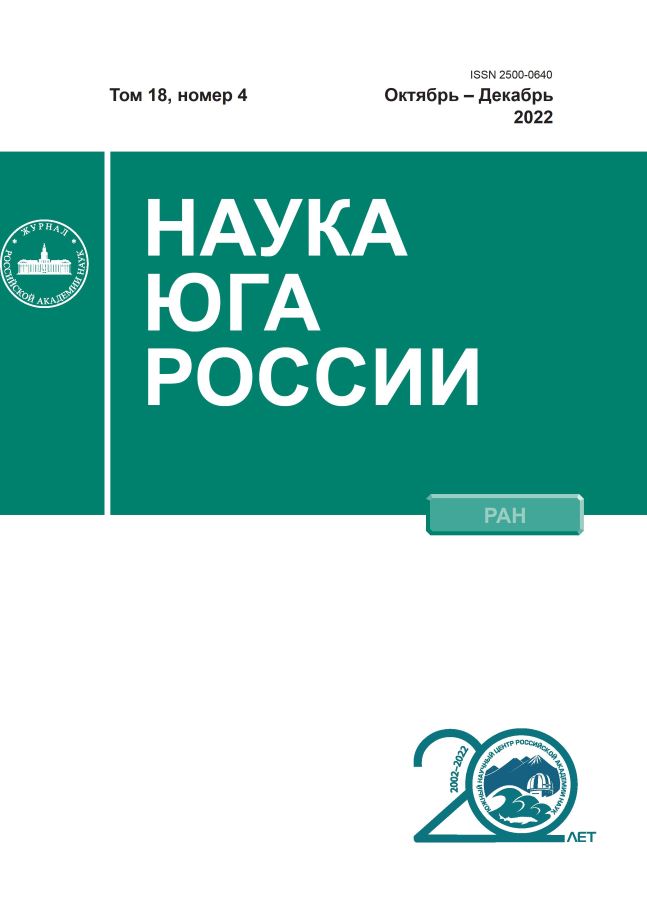INCREASING WEAR RESISTANCE OF HEAVILY LOADED TRIBOSYSTEMS BY FORMING STRUCTURE AND PROPERTIES OF THEIR CONTACT SURFACES
- 作者: Kolesnikov V.I1, Migal Y.F1,2, Kolesnikov I.V1,2, Sychev A.P1,2, Voropaev A.I1
-
隶属关系:
- Rostov State Transport University
- Federal Research Centre the Southern Scientific Centre of the Russian Academy of Sciences
- 期: 卷 18, 编号 4 (2022)
- 页面: 59-65
- 栏目: Articles
- URL: https://journals.eco-vector.com/2500-0640/article/view/627596
- DOI: https://doi.org/10.7868/S25000640220407
- ID: 627596
如何引用文章
详细
作者简介
V. Kolesnikov
Rostov State Transport University
Email: kvi@rgups.ru
Rostov-on-Don, Russian Federation
Yu. Migal
Rostov State Transport University; Federal Research Centre the Southern Scientific Centre of the Russian Academy of Sciences
Email: ymigal@mail.ru
Rostov-on-Don, Russian Federation; Rostov-on-Don, Russian Federation
I. Kolesnikov
Rostov State Transport University; Federal Research Centre the Southern Scientific Centre of the Russian Academy of SciencesRostov-on-Don, Russian Federation; Rostov-on-Don, Russian Federation
A. Sychev
Rostov State Transport University; Federal Research Centre the Southern Scientific Centre of the Russian Academy of SciencesRostov-on-Don, Russian Federation; Rostov-on-Don, Russian Federation
A. Voropaev
Rostov State Transport UniversityRostov-on-Don, Russian Federation
参考
- Das S., Guha S., Ghadai R., Kumar D., Swain B.P. 2017. Structural and mechanical properties of CVD deposited titanium aluminium nitride (TiAlN) thin films. Applied Physics A. 123: 412. doi: 10.1007/s00339-017-1032-0
- Vereschaka A., Kataeva E., Sitnikov N., Aksenenko A., Oganyan G., Sotova C. 2018. Influence of thickness of multilayered nanostructured coatings Ti-TiN-(TiCrAl)N and Zr-ZrN-(ZrCrNbAl) N on tool life of metal cutting tools at various cutting speeds. Coatings. 8(1): 44. doi: 10.3390/coatings8010044
- Xu X., Su F., Li Zh. 2019. Tribological properties of nanostructured TiAlN/W2N multilayer coating produced by PVD. Wear. 430–431: 67–75. doi: 10.1016/j.wear.2019.04.021
- Komarov F.F., Konstantinov S.V., Pilko V.V. 2014. Formation of nanostructured TiAlN, TiCrN, and TiSiN coatings using reactive magnetron sputtering. Journal of Friction and Wear. 35(3): 215–223. doi: 10.3103/S1068366614030064
- Te Velde G., Bickelhaupt F.M., Baerends E.J., Fonseca Guerra C., van Gisbergen S.J.A., Snijders J.G., Ziegler T. 2001. Chemistry with ADF. Journal of Computational Chemistry. 22(9): 931–967. doi: 10.1002/jcc.1056
- Migal Yu.F., Kolesnikov V.I., Shishiyanu D.N. 2021. Computer simulation of TiAlN coatings and its analogues on iron surface. In: IOP Conference. Series: Materials Science and Engineering. Volume 1029, Dynamics of Technical Systems (DTS 2020) (11–13 September 2020, Rostov-on-Don, Russia). IOP Publishing: 012057. doi: 10.1088/1757-899X/1029/1/012057
- Shugurov A.R., Akulinkin A.A., Panin A.V., Perevalova O.B., Sergeev V.P. 2016. Structural modification of TiAlN coatings by preliminary Ti ion bombardment of a steel substrate. Technical Physics. 61(3): 409–415. doi: 10.1134/S1063784216030191
- Kolesnikov V.I., Kudryakov O.V., Varavka V.N., Manturov D.S., Novikov E.S. 2021. Effect of the adhesive properties of vacuum ion-plasma TiAlN coatings on wear resistance in friction. Journal of Friction and Wear. 42(5): 317–326. doi: 10.3103/S106836662105007X
补充文件








